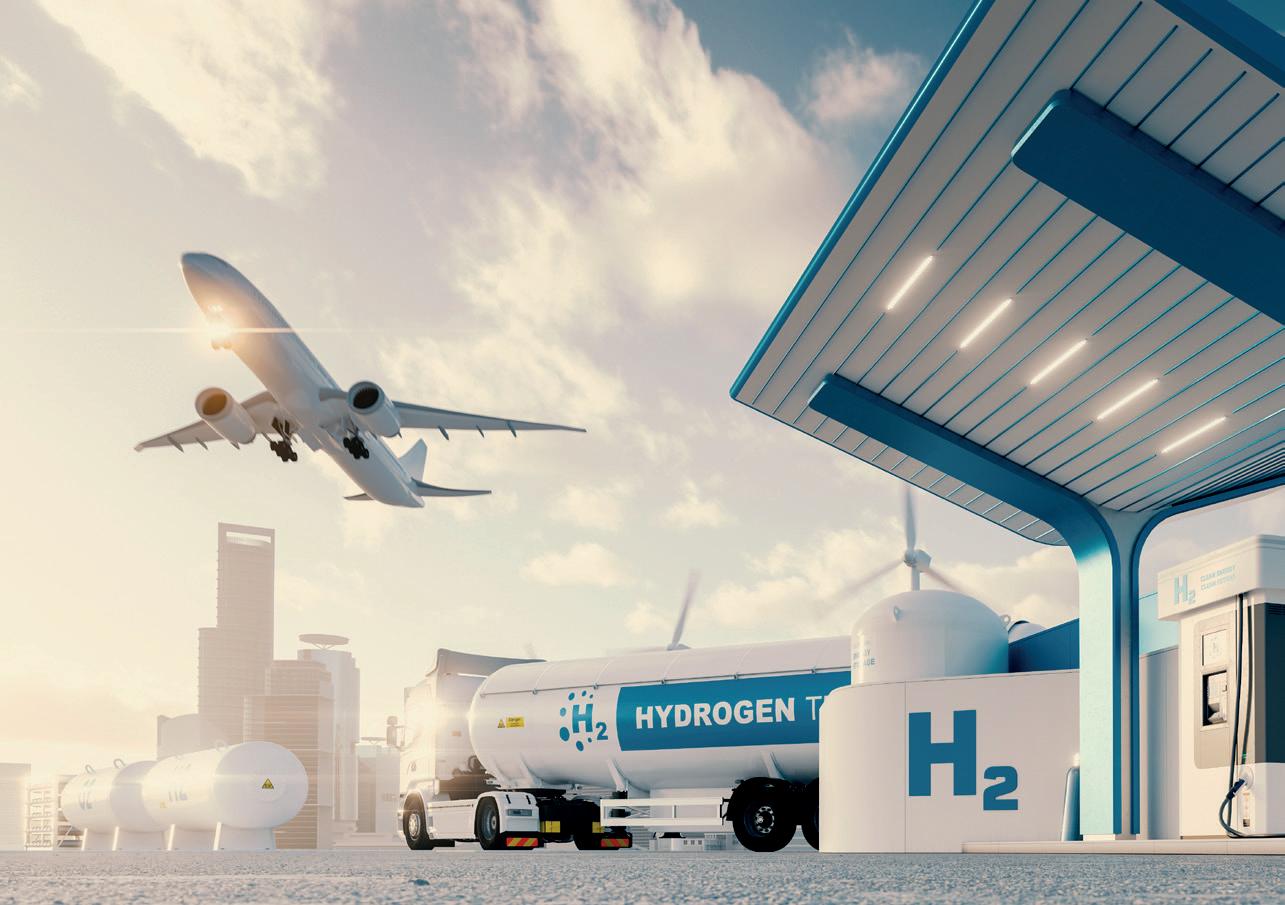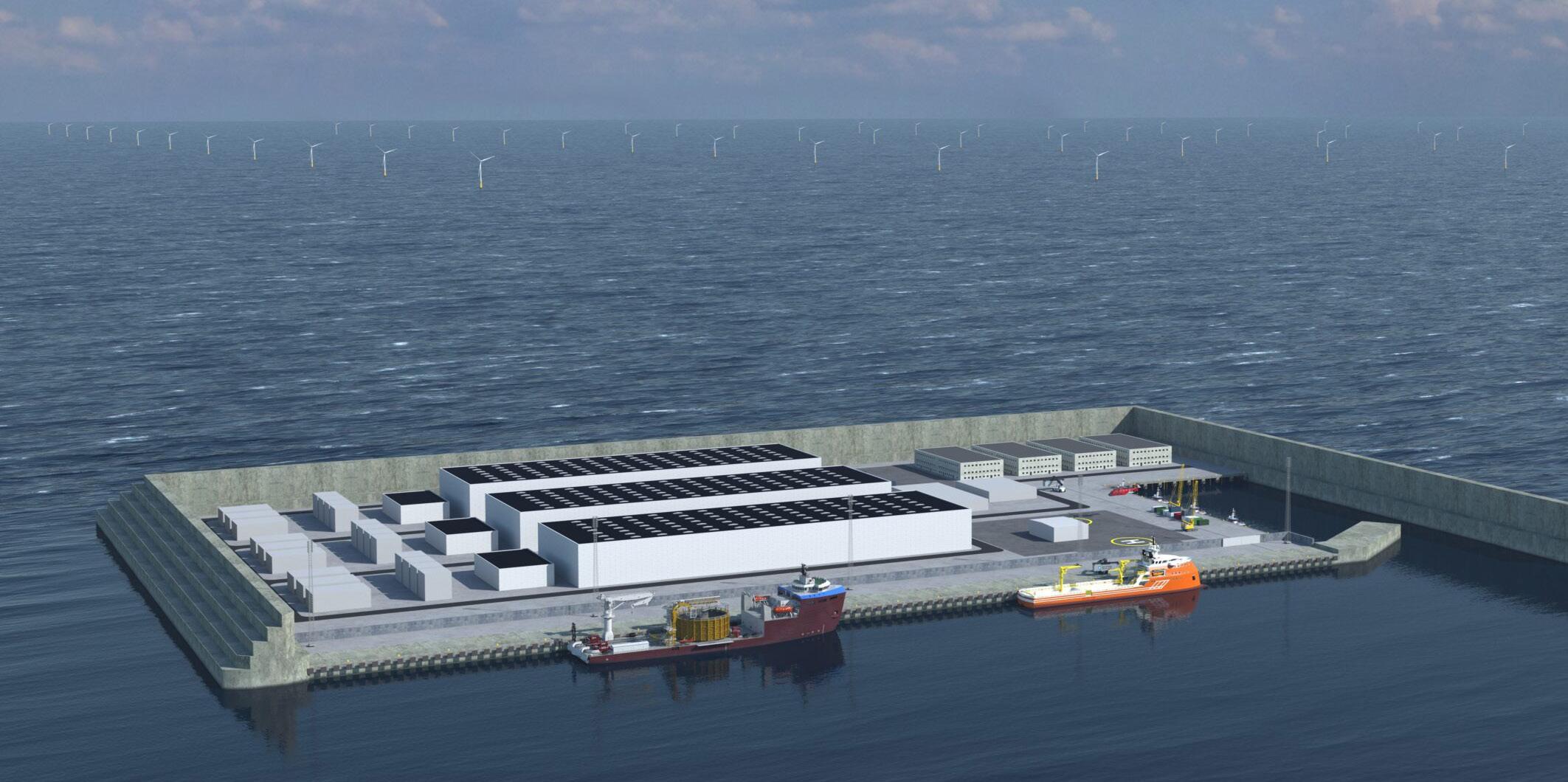
3 minute read
US HYDROGEN MARKET
from HIL ISSUE 15
How The Three Pillars Will Support The Us Hydrogen Market
by Hannah Wintle
Advertisement
Enforcing the ‘three pillars’ could support the rapid scaleup of clean hydrogen production in the US while still qualifying for the 45V tax credit, a new study has found.
In 2022, the US Inflation Reduction Act introduced a $3.0/kg H 2 credit for clean hydrogen production (45V). To qualify for this tax credit, hydrogen production must be less than 0.45kg CO2e/kg.
By contrast, hydrogen produced through steam methane reforming falls between $1.25 and $1.50/kg H2, making the 45V tax credit twice as valuable.
Now, a new analysis by Evolved Energy Research has concluded that enforcing the ‘three pillars’ of hydrogen production allows for the significant deployment of clean hydrogen within the next ten years, while still cutting carbon emissions and qualifying for the 45V tax credit.
Of the three pillars, the first is new clean supply, meaning that electrolysers must be supplied by clean sources of electricity that are not already serving the grid.
The second pillar is hourly matching, which dictates that electrolyser loads must match the clean energy portfolio production every hour.
Finally, the third pillar is deliverability, and commands that electrolyser loads must be located in the same region as the clean electricity resources.
Such pillars are the minimum guardrails against increasing carbon emissions and subsequently undermining the US’s climate targets.
The study ultimately found that despite claims that the three pillars would slow down electrolyser deployment, the results are actually very similar when compared to a loose rules approach.
Moreover, the three pillars could help avoid between 250 and 650 MMT of cumulative carbon emissions between 2024 and 2032. 650 MMT of carbon is equivalent to over 40% of annual US power sector emissions, illustrating the huge impact the three pillars could have.
Finally, the three pillars could incentivise investments into hydrogen projects featuring flexible electrolysers capable of operating in accordance with varying renewable energy supplies, which primes the industry for long-term success.
The report states: “The opportunity for flexibility is critical to the economics. Encouraging this type of learning is as important to the development of hydrogen markets as is simply buying down the cost of electrolysers.”
The three pillars help to address additionality problems
While the three pillars don't necessarily solve most of the additionality problems in the US, they certainly have an impact due to their ability to separate hydrogen producers from other renewable electricity consumers.
The three pillars could incentivise investments into hydrogen projects featuring flexible electrolysers capable of operating in accordance with varying renewable energy supplies.
Under the adoption of the three pillars, additional constraints are imposed on electrolyser loads that are not imposed on other loads.
Ben Haley, Co-Founder of Evolved Energy Research and author of the report explained: “[This] is actually what we want because these loads are different. The whole point of hydrogen in a net zero economy is that the loads can operate flexibly.”
“We can use hydrogen storage instead of electricity storage to balance. That sector coupling advantage is actually what we want to encourage.”
The three pillars therefore have the potential to separate hydrogen from the grid and prevent the buying of renewable energy from elsewhere in the US. Doing so would qualify for the 45V tax credit on an accounting basis, but without materially changing the deployment of clean electricity.
Ben added: “[This would] fundamentally cost us emissions because if clean electricity doesn't develop at the same scale as electrolysis load, then we're costing ourselves emissions functionally. The three pillars is meant to align those two things”
There is optimism for the US to meet its hydrogen targets

This analysis ultimately points to a positive future in meeting the US’s longterm energy targets, Ben explained.
He said: “You can meet those targets and you can apply these guardrails to protect against the case of hugely increasing emissions, and the reason you can do both is that the generosity of the 45V tax credit means that hydrogen producers can purchase renewable energy on an hourly basis. They can produce hydrogen and they can use that tax credit to basically make that converge.
“It's very consistent in volume and application to the US's hydrogen strategy. Fundamentally, I think we would consider it really consistent with its net zero ambitions in the long term. It also encourages the operation of and location of electrolysers in places that we actually want it in the long term, which makes it even more consistent.”
Ben also pointed out that the 45V tax credit, being as generous as it is, means that economics may not prove to be a constraining factor when it comes to moving towards energy targets.
He explained: “Our initial reaction to the 45V tax credit was that it’s a big tax credit. It's a really aggressive tax credit, certainly in this area.
“What we are trying to do is make sure that that money is well spent, fundamentally on reducing emissions and setting us up in the long term for achieving some of those targets.
I think, certainly in this case, the largesse of that tax credit means that we're pretty optimistic that it will have a big impact.”
This study emerges during a time when the US has taken to the world stage to announce its hydrogen strategy, and despite claims that the three pillars would stunt industry growth and delay electrolyser deployment, the analysis makes an encouraging case for opting for the three pillars over a loose rules approach.








